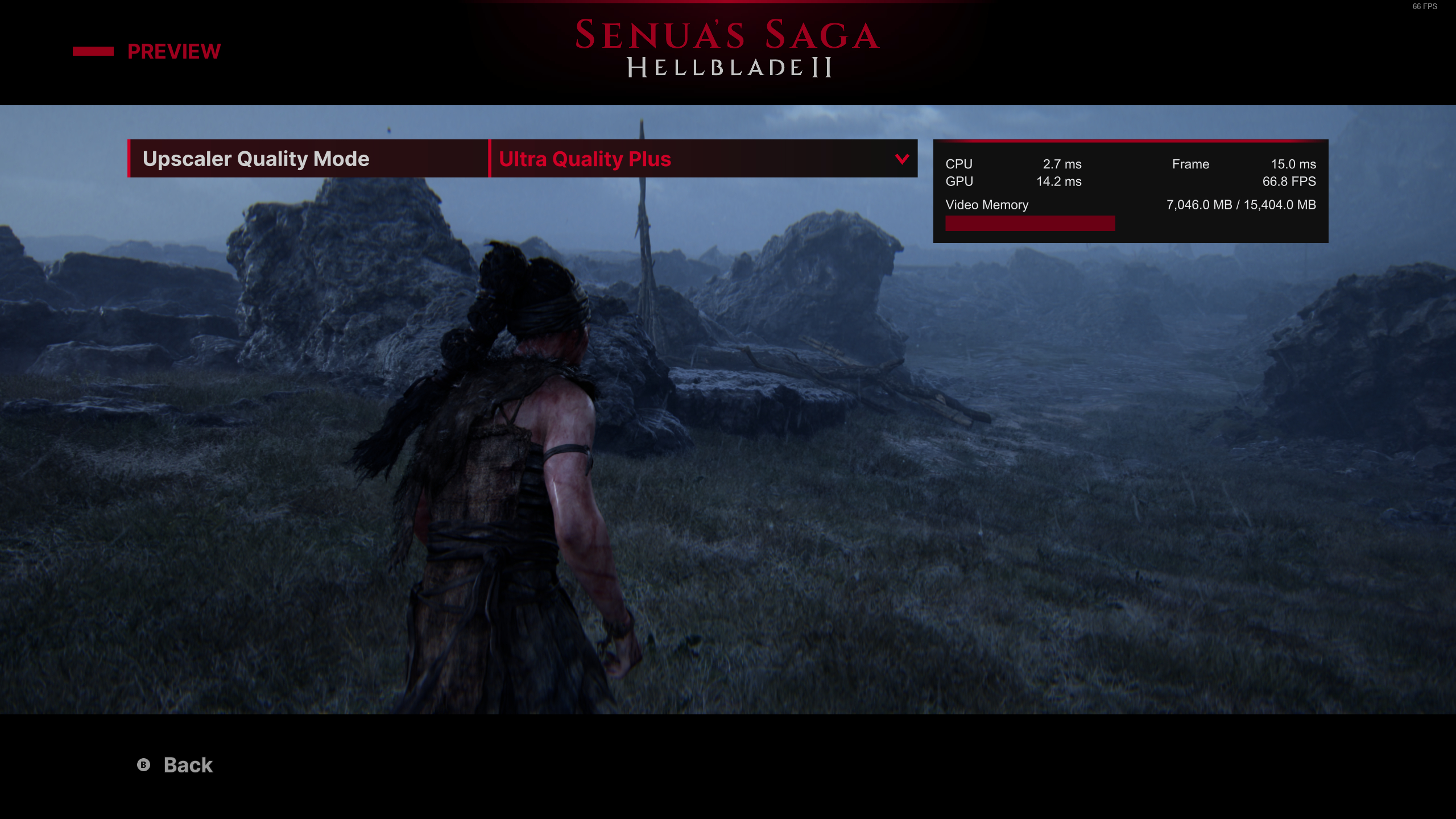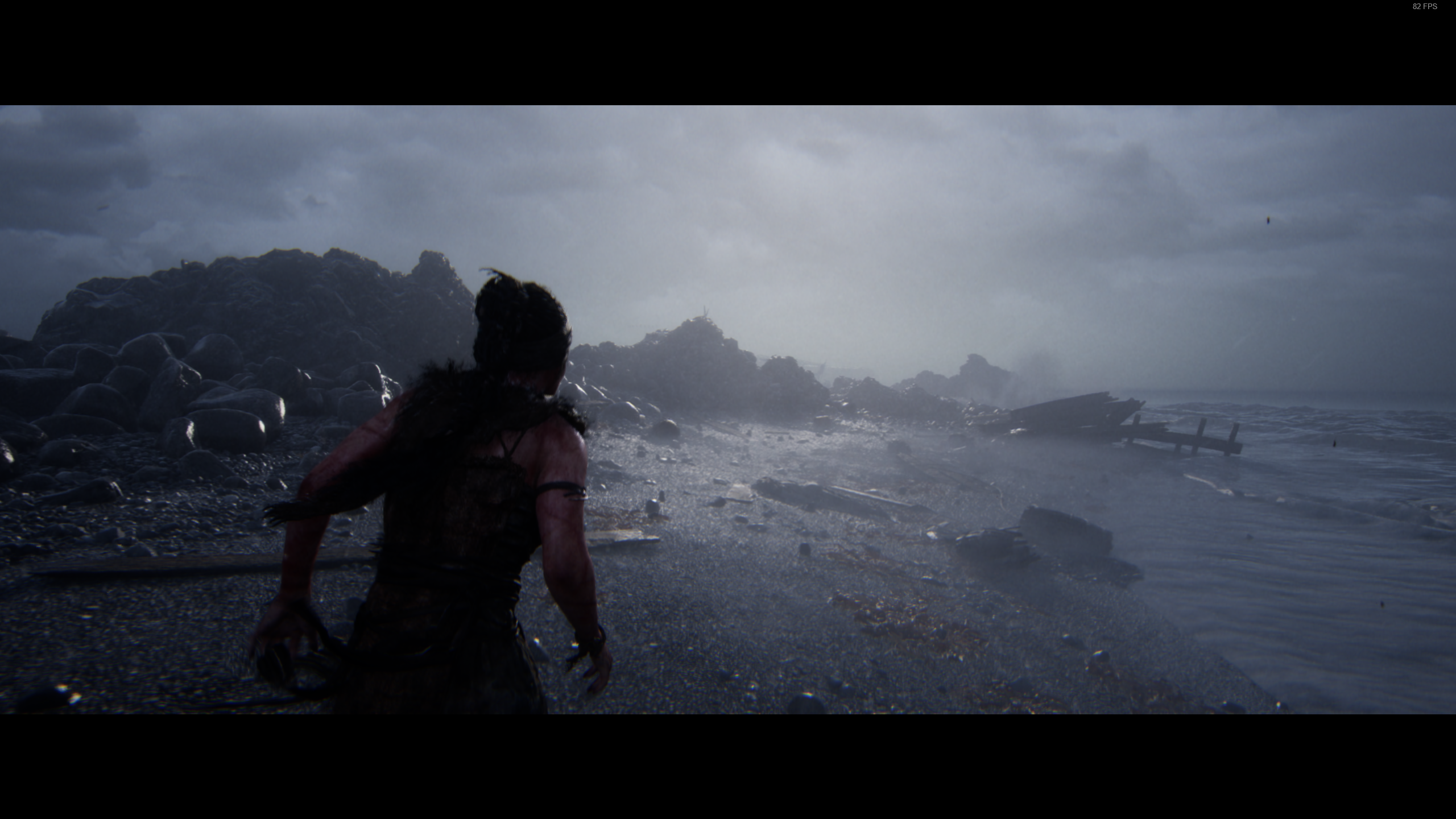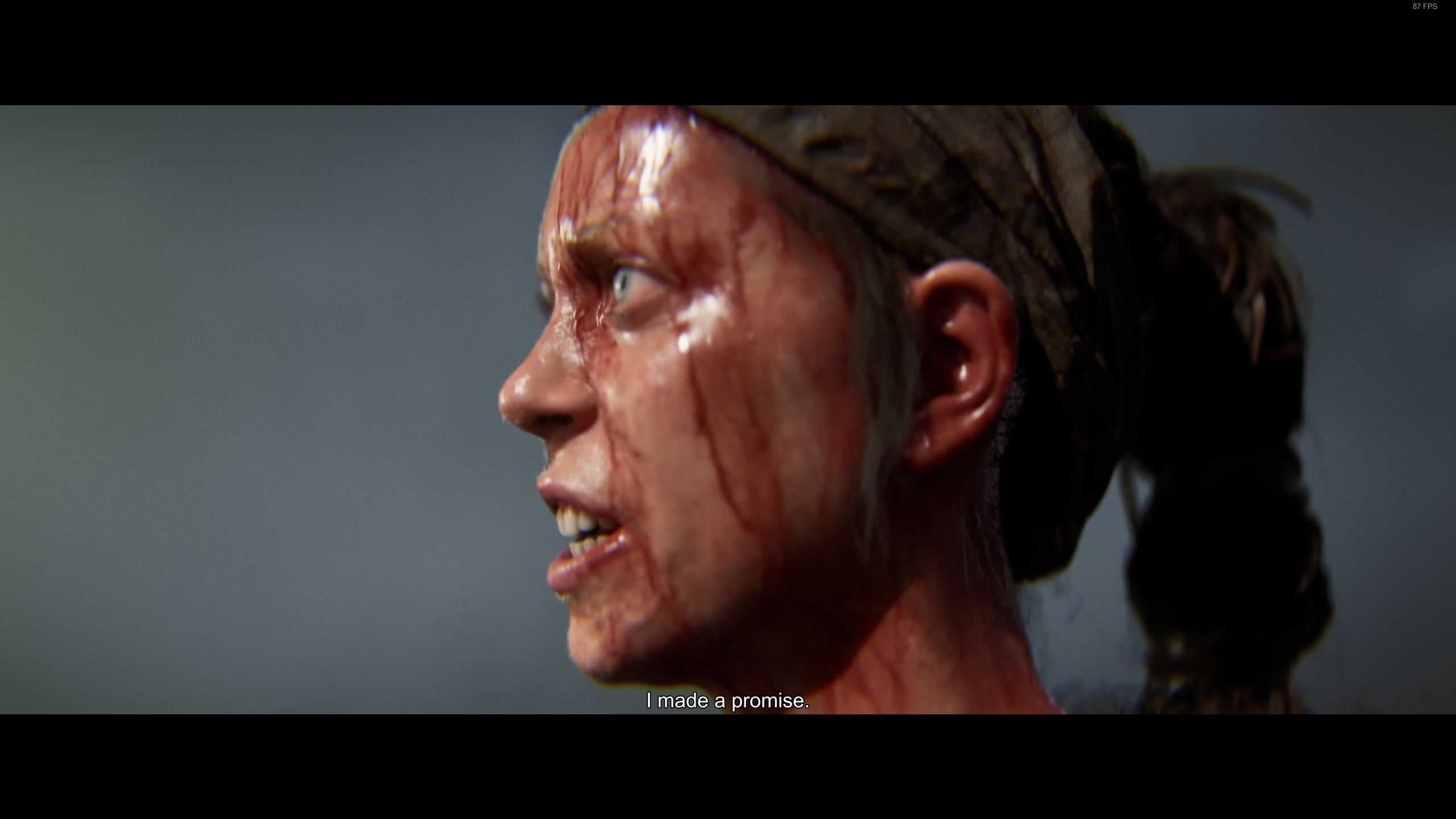
Upscalers are not everyone's cup of tea. What used to be viewed by many as a virtually free performance advantage for those prepared to sacrifice a bit of visual quality for a better frame rate has now increasingly become more of a requirement in many games for excellent performance. Developers take advantage of the tech to push hardware to its maximum in many of the latest games.
Still, there are purists who will argue that all upscalers deliver a "lesser" experience, and many will still choose to forgo those frame rate gains in favour of a non-upscaled native image. Many games now offer a choice as to which upscaling solution to use, although the end results can vary.
Senua's Saga: Hellblade 2, the sequel to the much acclaimed Hellblade: Senua's Sacrifice, takes an interesting approach to help players decide which upscaler to choose. Pausing the game at any point and entering the graphics settings menu, players are able to select a preview option, in which you're placed back in the game at the exact moment you paused at.
When deciding between upscalers, a drop down menu allows you to switch between them in real time. This means you can see exactly what effect each is having on the image quality of the frame, in conjunction with a boxout showing frame time, CPU and GPU time, VRAM usage, and overall frame rate.
A pretty handy feature, I think you'll agree, although it inadvertently exposes an uncomfortable truth—each upscaler is good at different things, and that makes choosing the right one a very subjective process.

There's DLSS 3, TSR, XeSS, and FSR 3 to choose from here, although only DLSS gets Frame Generation.
Testing upscalers in Senua's Saga: Hellblade II
Early in the game, Senua finds herself shipwrecked on a cold, craggy shoreline, with plenty of water effects, windy, foggy weather and glistening rocks. Here, FSR 3 shows some of its weaknesses.
Water effects display quite a lot of visual artifacting even at the highest quality settings, while shiny wet rocks and their associated lighting effects can look indistinct and noticeably blurry. Fog gains a slightly pixelated fringe at points.

XeSS, meanwhile, does a much better job. I noticed around a two to three FPS drop compared to FSR 3 at Quality, but the 1% lows appeared to be slightly higher, making it much of a muchness as to which you choose in terms of performance.
When it comes to the early game, XeSS was an easy choice to maintain the best balance of image quality and smooth frame rate.
Moving forward into grassier areas later in the story, XeSS shows some visual weakness of its own. Tufts of grass and well-lit scenery lose some distinction compared to FSR, which does a slightly better job of handling the sharp edges of swaying foliage on grassy plains and jagged mountains. I also noticed some fog pixelation which wasn't present in the early levels, which I can only assume was a different type of effect that was causing the Intel upscaler some issues.
Admittedly it's a difficult thing to see in still images, but FSR 3's rendering of fine grass is noticeably better in motion, particularly when it comes to distance. Look at the tufts next to the figure in the top right, for reference. That being said, it does occasionally introduce some shimmering, while XeSS isn't so prone.
I found myself wanting to bounce between the two upscalers depending on what scene I was looking at. In a game where immersion and atmosphere are paramount, I kept looking for artifacting rather than paying attention to the beautiful scenery to see which was doing a better job.
Unsurprisingly, DLSS provides the best image quality compromise of the lot, although it's still not without its drawbacks. Like all of the upscaling options here, it sometimes struggles with fur, clothing, and Senua's long, braided hair, and I did experience some odd visual artifacting in the sky in certain scenes.

You also need an Nvidia graphics card to use DLSS, unlike XeSS, FSR, and TSR which all work on any GPU hardware.
And as for TSR? Unlike the others, it's tied to a resolution scale slider. While it provides an excellent image quality that isn't far off DLSS at high settings, the frame rate gains are nowhere near as impressive, with around a 10 to 20 percent drop over DLSS at comparable image quality.
Which upscaler should I use in Senua's Saga: Hellblade II?
After much fiddling, I eventually threw my hands up and settled on XeSS at the Quality setting on my AMD-powered RX 7800 XT machine. Ultra Quality made little perceptible difference to the image over Quality while providing around 10% less frame rate.
While FSR 3 does a better job of grass and foliage, I prefer the way XeSS handles hair, which—given that Senua is on screen for 99% of the time with her flowing locks swaying in the wind—I find much less distracting than the other options. TSR is very usable, but the frame rate gains slimmer than I would like.

If you're an Nvidia card owner, it should come as little surprise that I'm going to recommend DLSS for your upscaling needs. I tested it on an RTX 4070-equipped laptop, and found that, while DLSS still struggles with certain visual aspects, it provided a good balance of image quality and frame rate gains. Although it still displays the odd "fizzing" around hair strands and the occasional odd artifact.
Still, Frame Generation is a boon for those of you looking for the highest frame rate possible, and the image overall looks good with it enabled.
Senua's Saga: Hellblade 2 is a very impressive looking game when it comes to art style. However, its reliance on stunning vistas, high fidelity graphical assets, fur and hair effects, and fog in combination with that useful preview function has the (unintended, I'm sure) effect of exposing the weaknesses of each upscaling tech with pinpoint precision.
Upscaling is still, at its core, about compromise. This game throws that fact into such sharp (or in this case, if you'll forgive me, blurry) relief that it could almost become the poster child for why upscalers—all of them, to some degree—are still a work in progress.







